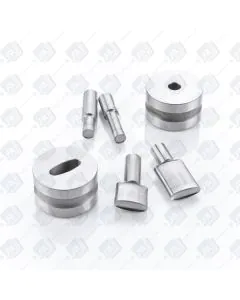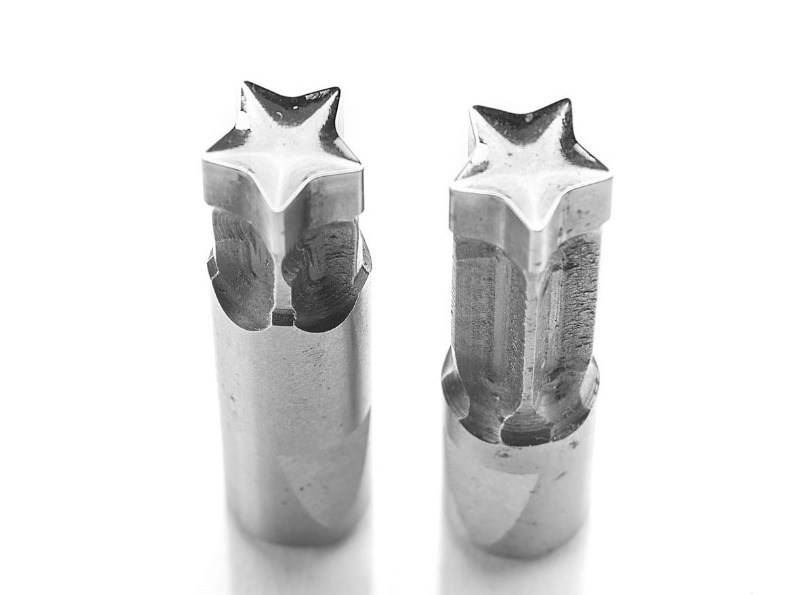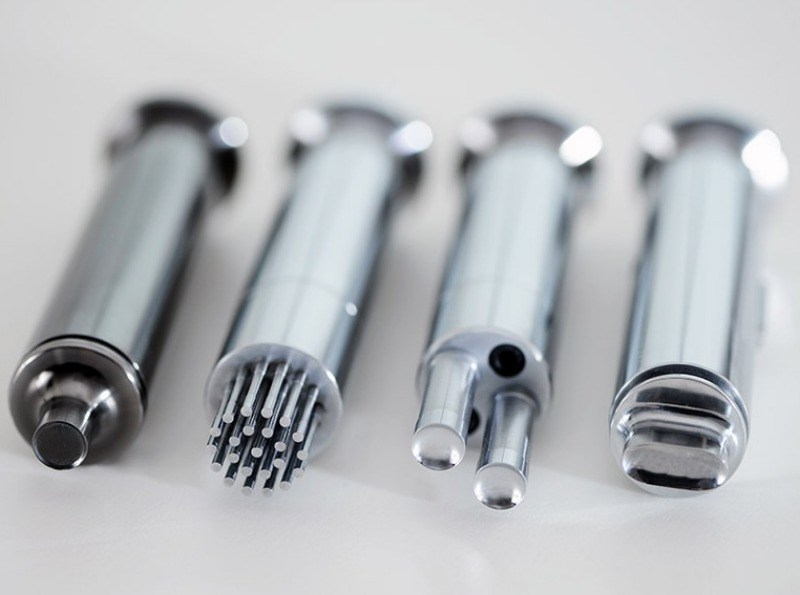It is time consuming and expensive for tablet manufacturers to inspect tooling equipment. That said, changes and advancement in technology makes it easier to doin-processinspections. Below is a brief on the improvement in technology to improvein-processinspection.
Guide To Multi-Tip Tooling Equipment
Sticking
One of the most common problems encountered in the tablet manufacturing industry, is what known as “Sticking”. This is what occurs when the granules of the tablet formulation stick to the tool face. It is the outcome of either or both using sticky formulation and a failure of the presses to compress the tablets. It is one of the more serious problems for manufacturers as it can go unnoticed during testing of tablet compression and is only seen once the item is in production.
At the production stage, sticking can affect the efficiency of the tablet making process, which can lead to significant loss of revenue for the company. It can also seriously affect the quality of the tablet and customers’ perception of the product.
To solve this problem, some companies use punch coating as many claim that it helps prevent sticking by enhancing the product release features of the press. Punch coating, in general, is expensive and in fact often less than effective. Another problem with punch coating is that it adds a variable to the equipment and tablet making process which is difficult to check. Especially during troubleshooting later, a punch coating can be an added concern.
Before proceeding with punch tip coating, it is worthwhile to check whether other options are available. Choosing a different grade of steel for the punches, for example, can reduce sticking and improve the release of the product. Choosing a high quality steel grade such those that have high chromium may be as effective as applying a coating, and will be easier to accommodate in troubleshooting should a problem arise.
Zapisz się do naszego newslettera
Consistency
One of the most important things to consider when it comes to the success of any production is the cleanliness and maintenance of the presses. Failure to maintain the equipment regularly leads to inconsistency in the quality of the tablets – resulting in variations in tablet features such as its weight and hardness. Inconsistent working length also affects the product as it also results to deviations on the tablet’s thickness.
Inconsistent filling of the dies can arise from faulty or worn ‘fill cams’. If these are too deep, excess granulation fills the dies which will then affect the weight of the tablets, and if the feeder fails to claim the excess granulation, it would accumulate on the turret neck area. The force of the spinning turret would then move the excess granulation outward to the dies resulting in different weights for each tablet produced.
Maintaining the correct flow of granulation is therefore important as it affects the uniformity of the compressed tablets. An even flow of granulation leads to consistently high quality tablets.
Speed
The introduction of multi-tip tooling has made a massive impact on the speed of tablet production, not only for pharmaceuticals but also in industry sectors such as confectionary, nutraceuticals, and for producing supplements such as vitamins. Nevertheless, multi-tip tools have only received widespread adoption by the pharmaceutical industry in the last 10 years. Manufacturers that produce micro tablets can turn them out an approximate speed of 5000/second tablet production. Nevertheless, many in the industry are still concerned about the ability of the equipment to produce quality pharmaceutical tablets.
In the late 1800s, Frank J. Stokes designed, engineered, and commercially produced the rotary tablet press using the same basic "B" and "D" type tool configuration that we know today. The configurations are the most common and recognized internationally, although there are two standards in use (the American standard, known as the TSM standard and the European or EU standard. The principle of operation of the modern rotary tablet press is the same as the Frank Stokes design in that cams are used to move the tooling through the varies cycles of tablet compression in a turret, with upper and lower punches and dies. The first rotary presses were able to produce 400 to 600 tablets per minutes whereas today, production rates of 100,000 tablets in one minute are routinely achieved. It is probably only time before further innovation in the industry gives even faster rates of tablet production.
Innovation in Technology
Two examples can be given that demonstrate continuing innovation in tabletting machinery. The first is the Fette die segment. This technology provides a high level of technical reliability even when manufacturing special tablet forms. The segments replace the traditional dies and die-locks that hold them in place in a conventional die table, and they have two major benefits. Firstly, they increase the number of stations in a given diameter of turret, thereby increasing the number of tablets produced per revolution of the turret. Second, they significantly reduce the machine setup time, by eliminating the lengthy process of setting each individual die in position. Instead of handling, cleaning and maintaining individual dies, a segment of several dies can be removed and replaced by simply removing two securing bolts.
The second innovation worth reporting is the Courtoy die ring which also has advantages over conventional dies, and is more versatile in that allows the use of both traditional dies and die shells. These are unique die configurations that are held in place without the use of traditional die locks. To remove and replace the Courtoy die ring, the turret’s upper and lower sections can be separated to allow unrestricted access to the die ring. The Courtoy die ring dramatically reduces the setup time of the press compared with one that employs conventional dies and locks.
Tooling issues
There are different configurations as well as sizes for tooling, each with its own benefits. The most common configurations are the B and D types which are available for the US and European cam formats. The B type is smaller and more common than the D type of tool and is usually preferred by pharmaceutical companies. The choice of different configuration is determined by the maximum allowable pressure and the speed of the tablet press.
Compression tooling is available in different materials, and the user needs to make sure that the steel used for the tablet tools is compatible with the particular formulation being used. High chromium steel is often preferred over standard stainless steel as it can reduce picking and sticking during the production, thereby increasing the process efficiency. Unfortunately high chromium steel can cause tablets to become brittle, which can be a problem for some tablet shapes or granulations.
Multi-tip tooling generally does not bring any further concerns, and most commonly used tool steels are suitable for multi-tip tooling. Things to consider when moving to multi-tip operation include the compression force, tablet size, sticking, ejection and the overall condition of the press. Multi-tip tooling has been a great boost to the industry, enabling very high volume production. In most cases a tablet manufacturer can expect an increase in output of approximate 80% production for each additional tip. If a press were able to produce 3500 tablets per minute for example, adding another tip to each punch would increase production level to up to 6300, a further tip will raise output to approximately 9,100 tablets per minute, and so on. Micro-tab tooling is another unique tool configuration that is engineered to reduce distortion of the tip, which commonly happens to the lower punch. Micro-tab configurations are useful for tablets that are below 4mm in diameter. For such tablets, higher compression force is required and, for this reason, both the upper and lower punch tips are shortened and therefore much tougher and less likely than conventional multi-tips to bend or distort.
Granulation
A consistent granulation process is essential to maintain overall tablet quality. Poor granulation leads to poor product flow, friable powder, sticking and picking on the tablet press and reduced tablet hardness. Excessive fines may lead to tool binding, excessive tool and press wear, including scorching and discoloration of the tools. This is a common issue nowadays especially as manufacturers prefer dry direct compression blends of powders. Another problem that may be overlooked is that of over-blending. Over blending occurs in the feed hopper of the tablet press itself. It the hopper is overfilled, the granulation continues to be blended unnecessarily by the hopper paddle, and may reduce the quality of what was an adequately blended granulation.
Tablet flashing and Tablet Land
A “tablet land” is the small flat ridge that appears around the tablet surface on the top and bottom faces. It is formed by the two dies and serves to strengthen the edge of the tablet and the edge of the tools. Tablets that have a significant land area are generally punched to higher compressive strength than those without a land area. Having a land area makes the tablets easier to coat as the tablets are less prone to chipping and mechanical degradation. The tablet land should not be confused with poor quality tablets, which can have a small raised crown around the tablet perimeter; this is a defect commonly referred to as ‘flashing’ which is caused by tool wear, i.e., punch and die clearance, and is also dependent to an extent on tablet design. Tablets that have this flashing defect can be passed through a vibrating machine, called a tablet de-duster. The de-duster helps to remove the soft feather edge, reducing dust accumulation during packaging and edge attrition during the coating process.
Maintenance
Cleaning and proper maintenance can be an issue for many tablet manufacturers experience. Hot water is essential for cleaning tablet machines as it is fast drying and prevents the possibility of discoloration on the steel surfaces of tablet presses. A supply of hot water and the correct food grade cleaning materials can be expensive but are necessary to prevent spotting or corrosion especially on the surface of carbon tool steels.








